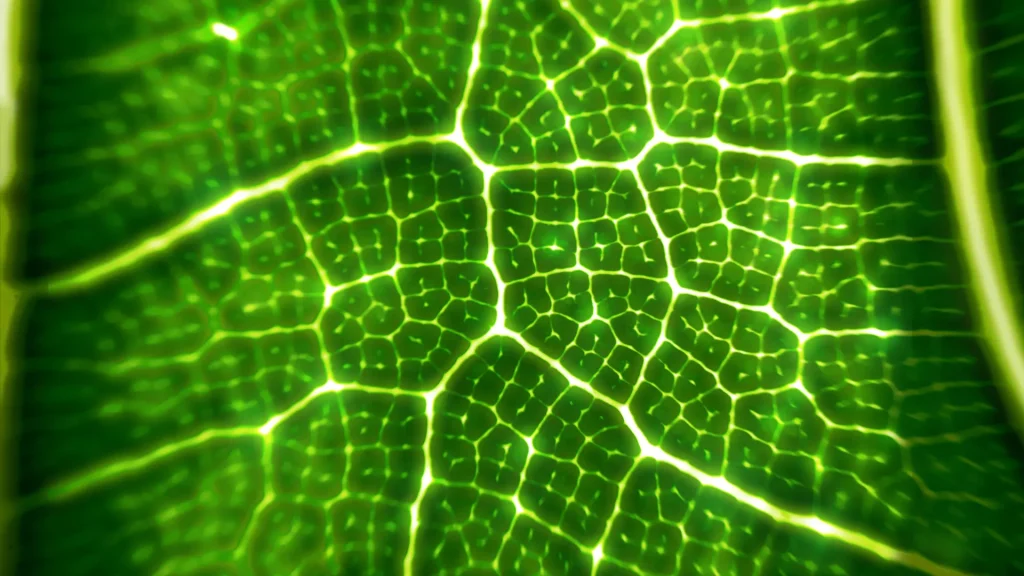During photosynthesis, an enzyme called rubisco catalyzes a key reaction — the incorporation of carbon dioxide into organic compounds to create sugars. However, rubisco, which is believed to be the most abundant enzyme on Earth, is very inefficient compared to the other enzymes involved in photosynthesis.
MIT chemists have now shown that they can greatly enhance a version of rubisco found in bacteria from a low-oxygen environment. Using a process known as directed evolution, they identified mutations that could boost rubisco’s catalytic efficiency by up to 25 percent.
The researchers now plan to apply their technique to forms of rubisco that could be used in plants to help boost their rates of photosynthesis, which could potentially improve crop yields.
“This is, I think, a compelling demonstration of successful improvement of a rubisco’s enzymatic properties, holding out a lot of hope for engineering other forms of rubisco,” says Matthew Shoulders, the Class of 1942 Professor of Chemistry at MIT.
Shoulders and Robert Wilson, a research scientist in the Department of Chemistry, are the senior authors of the new study, which appears this week in the Proceedings of the National Academy of Sciences. MIT graduate student Julie McDonald is the paper’s lead author.
Evolution of efficiency
When plants or photosynthetic bacteria absorb energy from the sun, they first convert it into energy-storing molecules such as ATP. In the next phase of photosynthesis, cells use that energy to transform a molecule known as ribulose bisphosphate into glucose, which requires several additional reactions. Rubisco catalyzes the first of those reactions, known as carboxylation. During that reaction, carbon from CO2 is added to ribulose bisphosphate.
Compared to the other enzymes involved in photosynthesis, rubisco is very slow, catalyzing only one to 10 reactions per second. Additionally, rubisco can also interact with oxygen, leading to a competing reaction that incorporates oxygen instead of carbon — a process that wastes some of the energy absorbed from sunlight.
“For protein engineers, that’s a really attractive set of problems because those traits seem like things that you could hopefully make better by making changes to the enzyme’s amino acid sequence,” McDonald says.
Previous research has led to improvement in rubisco’s stability and solubility, which resulted in small gains in enzyme efficiency. Most of those studies used directed evolution — a technique in which a naturally occurring protein is randomly mutated and then screened for the emergence of new, desirable features.
This process is usually done using error-prone PCR, a technique that first generates mutations in vitro (outside of the cell), typically introducing only one or two mutations in the target gene. In past studies on rubisco, this library of mutations was then introduced into bacteria that grow at a rate relative to rubisco activity. Limitations in error-prone PCR and in the efficiency of introducing new genes restrict the total number of mutations that can be generated and screened using this approach. Manual mutagenesis and selection steps also add more time to the process over multiple rounds of evolution.
The MIT team instead used a newer mutagenesis technique that the Shoulders Lab previously developed, called MutaT7. This technique allows the researchers to perform both mutagenesis and screening in living cells, which dramatically speeds up the process. Their technique also enables them to mutate the target gene at a higher rate.
“Our continuous directed evolution technique allows you to look at a lot more mutations in the enzyme than has been done in the past,” McDonald says.
Better Rubisco
For this study, the researchers began with a version of rubisco, isolated from a family of semi-anaerobic bacteria known as Gallionellaceae, that is one of the fastest rubisco found in nature. During the directed evolution experiments, which were conducted in E. coli, the researchers kept the microbes in an environment with atmospheric levels of oxygen, creating evolutionary pressure to adapt to oxygen.
After six rounds of directed evolution, the researchers identified three different mutations that improved the rubisco’s resistance to oxygen. Each of these mutations are located near the enzyme’s active site (where it performs carboxylation or oxygenation). The researchers believe that these mutations improve the enzyme’s ability to preferentially interact with carbon dioxide over oxygen, which leads to an overall increase in carboxylation efficiency.
“The underlying question here is: Can you alter and improve the kinetic properties of Rubisco to operate better in environments where you want it to operate better?” Shoulders says. “What changed through the directed evolution process was that rubisco began to like to react with oxygen less. That allows this rubisco to function well in an oxygen-rich environment, where normally it would constantly get distracted and react with oxygen, which you don’t want it to do.”
In ongoing work, the researchers are applying this approach to other forms of rubisco, including rubisco from plants. Plants are believed to lose about 30 percent of the energy from the sunlight they absorb through a process called photorespiration, which occurs when rubisco acts on oxygen instead of carbon dioxide.
“This really opens the door to a lot of exciting new research, and it’s a step beyond the types of engineering that have dominated rubisco engineering in the past,” Wilson says. “There are definite benefits to agricultural productivity that could be leveraged through a better rubisco.”
The research was funded, in part, by the National Science Foundation, the National Institutes of Health, an Abdul Latif Jameel Water and Food Systems Lab Grand Challenge grant, and a Martin Family Society Fellowship for Sustainability.

